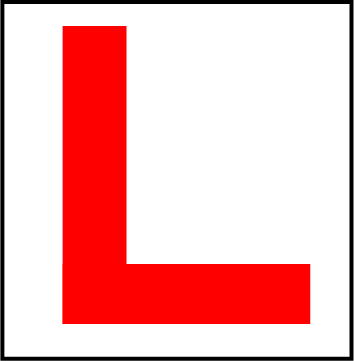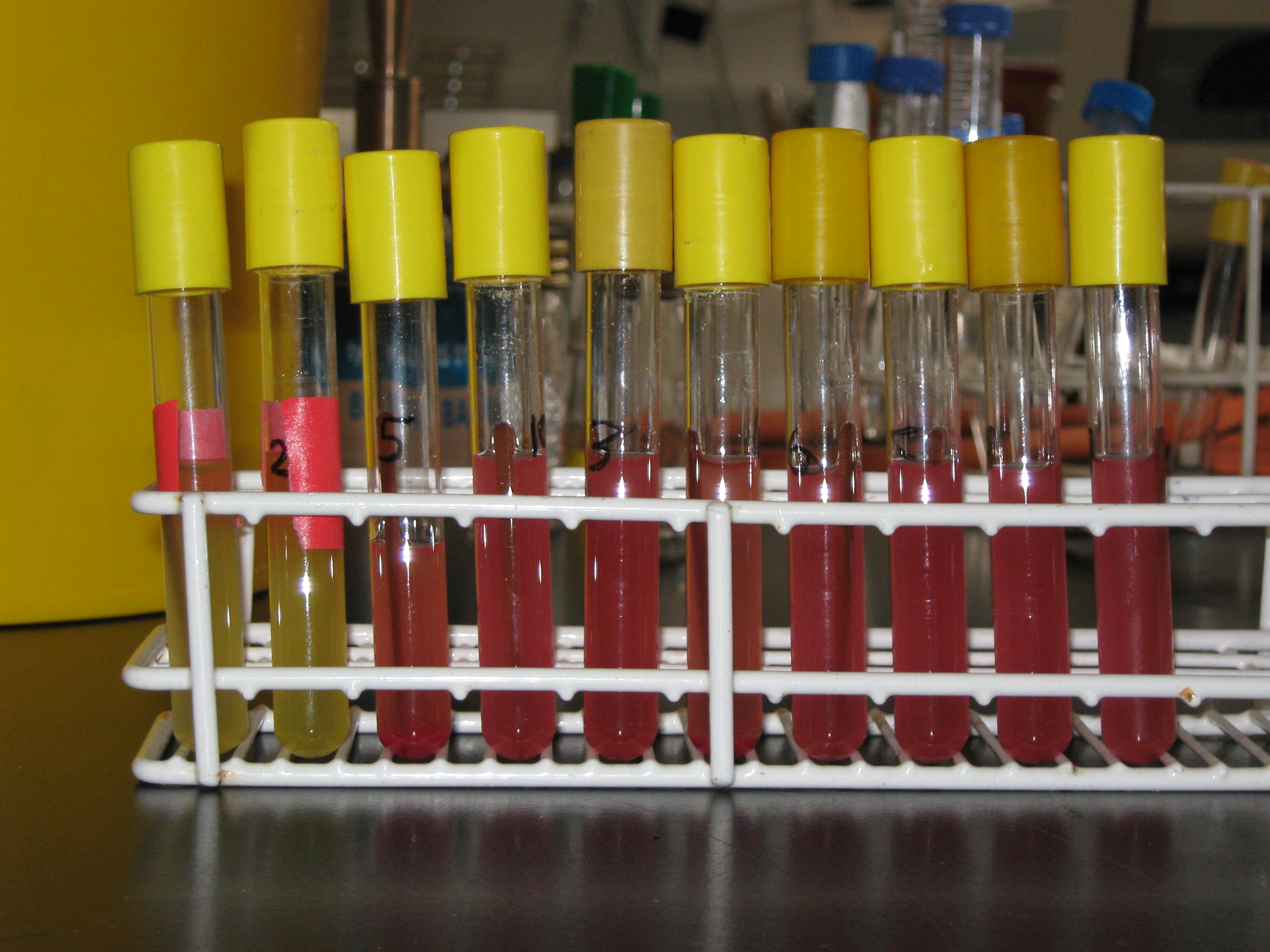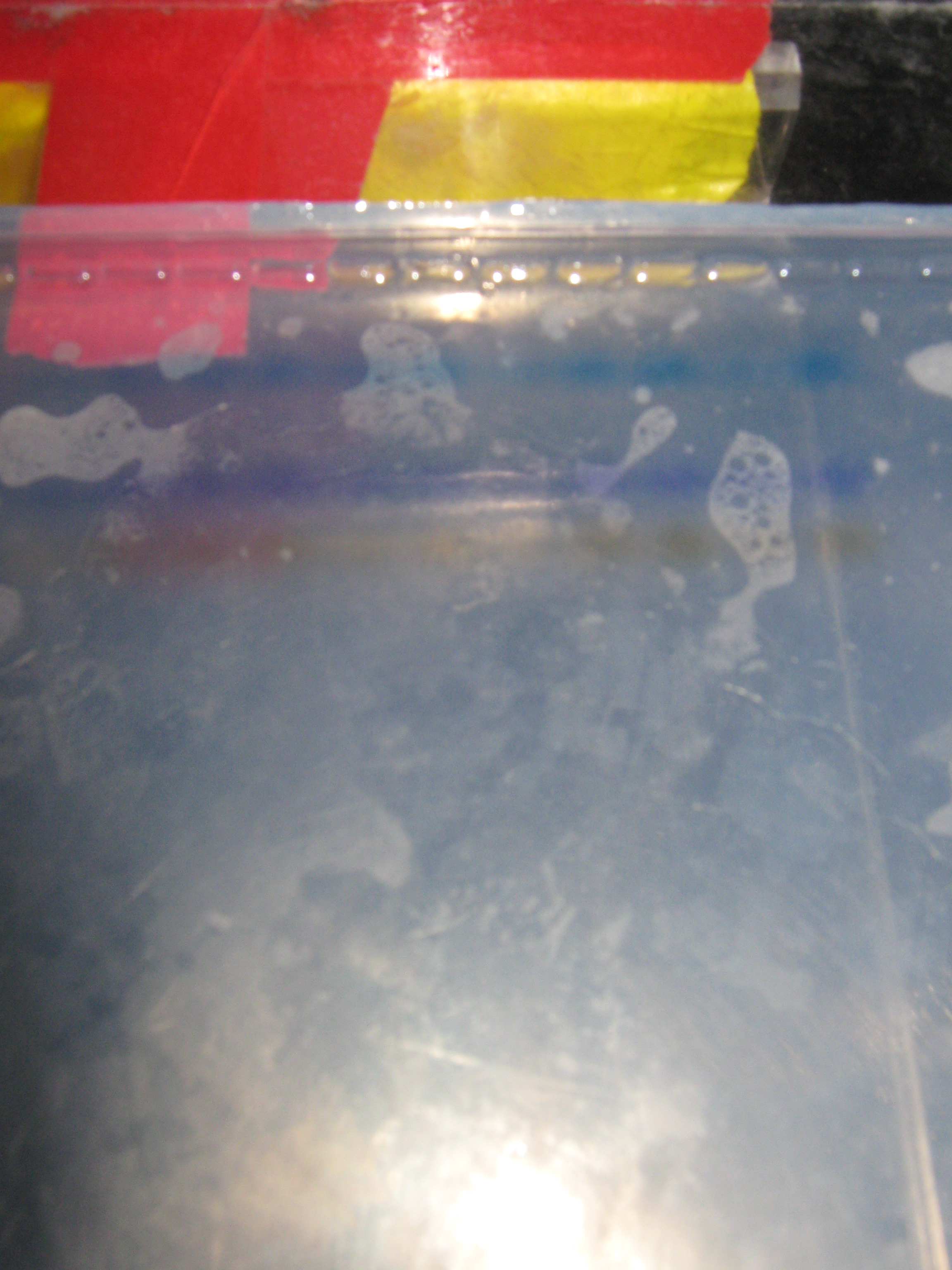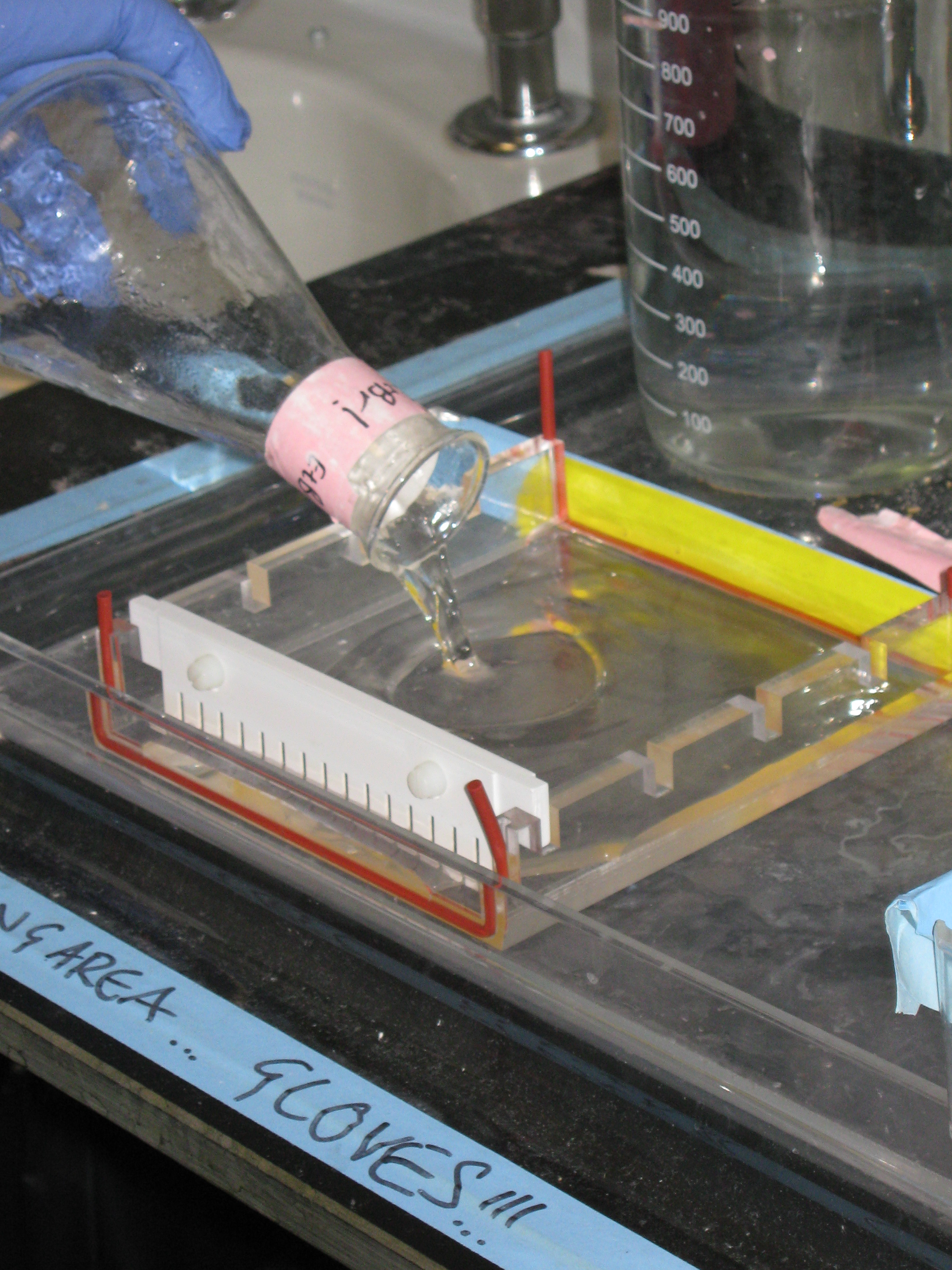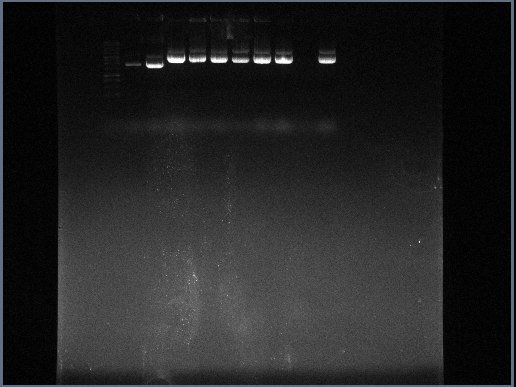Team:Newcastle/IntroductoryLabwork/9 July 2009
From 2009.igem.org
Introductory Lab Session: 9th July 2009
Experiment Recap
Up to this point, we have successfully isolated and cultured single colonies of E.coli cells. With these micro-organisms, we were able to induce competence and had the opportunity to transform them with the following BioBricks:
- [http://partsregistry.org/Part:BBa_J04450 BBa_J04450] with plasmid pSB1AK3
- [http://partsregistry.org/Part:BBa_I13522 BBa_I13522] with plasmid pSB1AK3
- [http://partsregistry.org/Part:BBa_J04450 BBa_J04450] with plasmid pSB1AT3
So far, we are convinced that 2 colonies of our cultured E.coli cells have become transformed by BioBrick BBa_I13522 (with plasmid pSB1AK3) which encodes GFP and that 10 colonies of our cultured E.coli cells have been transformed by BioBrick BBa_J04450 (with plasmid pSB1AT3), which leads to the production of RFP. This can be seen visually in the tubes; see image in the previous experiment under the heading 'Observations'.
However visual representations may not always available and in these scenarios, it is difficult to tell whether the E.coli have become transformed by the given BioBrick unless DNA analysis is conducted. Even though the cells have survived the negative selection process (i.e. antibiotic exposure), it doesn't mean that they all possess the BioBrick - they could have received that resistance through other means.
Aim of Today's Experiment
We need to get ourselves familiarised with conducting DNA gel electrophoresis. We shall be doing this by preparing and then inserting the plasmid DNA (extracted from the 10 colonies of cells) into the gel. At this stage, the plasmids will be inserted as uncut objects because no restriction enzymes have been added yet (the analysis of cut plasmids comes at a later stage). Thus we won't be proving that it is the BioBrick which is causing the bacteria to display the properties seen so far. We will be proving that the bacteria have taken up plasmids.
This procedure will see the team:
- Prepare the DNA electrophoresis equipment by preparing the gel, administering buffer and ethidium bromide, etc
- Prepare the plasmid DNA for gel electrophoresis.
- Apply the DNA to the gel and conduct electrophoresis
- Capture an image of the gel using UV-scanner.
Experiment procedures
The protocol we used for this practical can be found 'here.'
Preparing the gel
- A premade stock solution of agarose gel (0.8% agarose) was taken and heated in microwave for 3 minutes under medium/high power initially. Short 30 second bursts were required to completely liquify the solution
- Gel was then removed from microwave and left on bench to cool
Preparing the buffer
- Premade solution of 1x TAE was used - took volume of this and added to flask
- Added 8 microlitres to the TAE buffer
Preparing the gel electrophoresis equipment
- Trays and comb were cleaned and provided for the team, thanks to the lab staff!
- Inserted comb into groove nearest the edge of the tray and placed in proximity of the electrodes.
Pouring Buffer and Gel
- Placed the 1x TAE buffer (plus ethidium bromide) into the tray (with gel comb inserted in groove nearest negative electrode)
- Agarose gel solution placed into tray and bubbles removed using a pipette. After this, lid placed over the gel electrophoresis equipment.
Preparing DNA samples
- Removed 10 Eppendorf tubes (containing the plasmid DNA for the 10 colonies of E.coli) from the freezer and defrosted them briefly. In the meantime, 10 fresh Eppendorf tubes were placed in rack and labelled '1-10' to match the 10 plasmid DNA Eppendorf tubes.
- When defrosted, 9 microlitres of the plasmid DNA was transferred to new Eppendorf tubes. 1 microlitre of dye was then added to the new Eppendorf tubes. The tubes were then lightly centrifuged to make sure the dye and the plasmid DNA had mixed at the bottom of the tube.
- An Eppendorf tube containing the standard DNA ladder and dye was added to the rack, in the first entry of the row with the 'DNA + dye' tubes following afterwards (in order of 1-10). This was then taken over to the gel electrophoresis tray.
Loading the samples and carrying out electrophoresis
- Made sure agarose gel had completely set. After confirmation of setting, the gel comb was removed revealing wells in which to put the DNA into.
- Making sure that the pipette was pointed vertically over the well and that the pipette was hovering over (and not poking) the well, 10 microlitres of DNA was slowly and gently added to each well.
- Well 1 = DNA Ladder
- Well 2 = plasmid DNA from colony 1 - BBa_I13522 with plasmid pSB1AK3
- Well 3 = plasmid DNA from colony 2 - BBa_I13522 with plasmid pSB1AK3
- Well 4 = plasmid DNA from colony 3 - BBa_J04450 with plasmid pSB1AT3
- Well 5 = plasmid DNA from colony 4 - BBa_J04450 with plasmid pSB1AT3
- Well 6 = plasmid DNA from colony 5 - BBa_J04450 with plasmid pSB1AT3
- Well 7 = plasmid DNA from colony 6 - BBa_J04450 with plasmid pSB1AT3
- Well 8 = plasmid DNA from colony 7 - BBa_J04450 with plasmid pSB1AT3
- Well 9 = plasmid DNA from colony 8 - BBa_J04450 with plasmid pSB1AT3
- Well 10 = plasmid DNA from colony 9 - BBa_J04450 with plasmid pSB1AT3
- Well 11 = plasmid DNA from colony 10 - BBa_J04450 with plasmid pSB1AT3
- Lid was applied and electrodes positioned correctly (positive electrode at end furthest from wells and negative electrode positioned nearest wells). Power was switched on and voltage set to 150 volts. This process was allowed to run for 40 minutes.
Observations and Results
- Once 40 minutes had expired, electrodes were switched off and lid removed. In the gel it could be seen that the DNA had streaked from the wells to the positive electrode. Three marker bands were visible, in order from nearest wells to nearest positive electrode - a cyan band, a dark blue band and a yellow band.
- Gel removed from gel tray and taken to UV scanner. The following photograph was produced:
From this photograph it can be seen that apart from the E.coli cells located in colony 9, all the colonies that had survived the negative selection and displayed either a red or a green colour in solution contained plasmid DNA. This proves that most of the colonies had been transformed with a plasmid at least. The possibilities for colony 9 not revealing a plasmid DNA readout are as follows:
- Colony 9 E.coli cells did not receive the plasmid DNA and acquired it's ampicillin resistance and colour properties elsewhere
- The plasmid DNA (which appears as a transparent pellet in the previous experiment) was lost when the supernatant was tipped out.
Now that Team:Newcastle has proved that the competent E.coli cells have taken up the plasmids, the next step will be to prove that the 'E.coli' have taken up the specific BioBricks that we attempted to transform them with. This will involve restriction enzymes and another DNA gel electrophoresis.
|
| |||||||||||||||||||||||||||||||||||||||||||||||||||||||||||||||||||||||||||||||||||||||||||
News
Events
- 20 – 21 June 2009 - Europe workshop (London)
- 23 – 24 June 2009 - UK iGEM meetup (Edinburgh)
- 23 October Practice Presentation (Newcastle)
- 23 October T-shirts are ready
- 27 October Practice Presentation (Sunderland)
- 27 October Poster is ready
- 30 October – 2 November 2009 - Jamboree (Boston)
Social Net
- Newcastle iGEM Twitter
- [http://www.facebook.com/home.php#/group.php?gid=131709337641 Newcastle on Facebook]
- [http://www.youtube.com/user/newcastle2009igem Newcastle Youtube Channel]
 "
"

